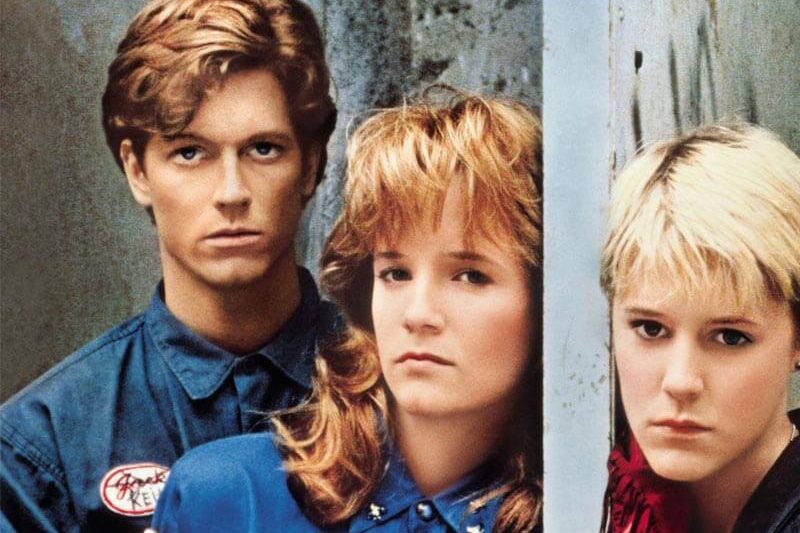“Some Kind of Wonderful” was a beautiful kind of mess
"Some Kind of Wonderful" was a beautiful kind of mess

This year is the 35th anniversary of the film Some Kind of Wonderful, written by the king of ’80s teen romance flicks, John Hughes, and directed by Howard Deutch. By 1987, Hughes had written some of the most successful and iconic teen films of the decade, including The Breakfast Club and Pretty in Pink. Though the recycled storyline in Some Kind of Wonderful reflects a lack of original ideas from Hughes, to this day the film secures its legacy as a flawed but still classic watch—in all its innocent, timeless and romantic glory.
The film, starring Eric Stoltz and Mary Stuart Masterson, overflows with clichés, but arguably, that’s what makes it timeless. Main character Keith (Stoltz) is a working-class kid from the wrong side of the tracks. He swoons over his wealthy, glossy classmate Amanda (Lea Thompson), who can’t escape her jerk boyfriend. As Keith’s crush develops, his best friend Watts (Masterson)—the walking tomboy cliché of “not like other girls”—slides in when she realizes she’s always had feelings for him. It’s hilariously perfect timing, but in the context of the film, Watts isn’t the obvious choice for Keith compared to Amanda. She’s a brash and unruly punk who’s more interested in drumming than dating…or so the audience thinks.
Yes, this is the exact (gender-flipped) plot of the earlier Hughes film Pretty in Pink, which starred Hughes-muse Molly Ringwald as Andie, a girl from the wrong side of the tracks who falls for the rich and preppy Blane. Her weird best friend Duckie has always been obsessed with her, but she gets who she wants in the end: Blane. It’s impossible not to compare Some Kind of Wonderful to its predecessor and find it lacking, but nevertheless, Some Kind of Wonderful holds onto the charm of Hughes’ earlier films.
Journalist Hadley Freeman lays out the crux of the problem Hughes faced in her book Life Moves Pretty Fast, a sweet love letter to ’80s films. Ringwald refused to appear in Some Kind of Wonderful after Hughes requested she star in it, Freeman writes. In addition, test audiences didn’t like the ending of Pretty in Pink in which the possessive, weird kid got the girl. Hughes had to rewrite it and bring the cast back for reshoots. According to Freeman, Some Kind of Wonderful felt like the pushback to the negative response Pretty in Pink’s original ending received. Maybe Hughes was determined to have the underdog win in the end.
The performances of the three leads in Some Kind of Wonderful are nuanced and tender, but Watts is the most memorable character. She’s rebellious and tough, but her longing for Keith strikes a sentimental chord. That desire and sadness is relatable, though the film definitely missed an opportunity to focus on her journey of burgeoning desire for an old friend and explore how to deal with those feelings in a mature way. But Masterson’s portrayal of Watts spoke to female audiences who didn’t want to be traditionally feminine. Watts gets the guy and the longed-for validation in the end.
The film flourishes with its unexpected depth, as the characters face issues bigger than what outfit to wear to prom. Amanda grapples with a toxic relationship with her boyfriend, and inches towards understanding and preservation of her own worth by the end of the film. Though she likes Keith, she understands he has feelings for Watts, so she lets him go.
Keith is caught between his father’s wishes for him to go to college and his desire to forge his own path. The scene in which their dispute comes to a head is as powerful today as it was 35 years ago. They stand in Keith’s room, charging each other without understanding the other’s perspective. “You’re only 18 years old, for Christ’s sake,” his dad yells. Keith responds, “Then I’m 19, then I’m 20! When does my life belong to me?”
The film fails, however, to tie up loose ends or expand on certain character-building scenes. The camera sweeps over pixie-haired Watts playing her drums in the opening credits, intercut with Keith working in an auto body shop. After work, he’s casually walking toward an oncoming train. Is he suicidal or just an adrenaline junkie? This is never touched on again. And why does Watts adore the drums?
Along with its underdeveloped characters, the editing forgets to linger on the sweet moments. It doesn’t stop to take a breath. Desires move so fast the audience is left spinning and then scoffing at the predictability of certain moments, like when Watts has Keith practice kissing Amanda on her.
In the last 15 minutes of the film, Keith spends all of his college money on an elaborate date for Amanda at the Hollywood Bowl, including an expensive pair of earrings. But through that night, they realize that they’ve used each other. Amanda needs to be alone for a while, and Keith has had feelings for Watts all along. He walks down a moonlit street and gives the earrings to Watts after kissing her. Her childish joy is palpable; her feelings validated. The underdog wins and the hero forges his own path. The chemistry between them feels real and earned. Though predictable, you can’t help but smile for Watts. As Some Kind of Wonderful ends, the innocence, romance and timelessness come full circle. It feels like the characters are where they’re meant to be.








